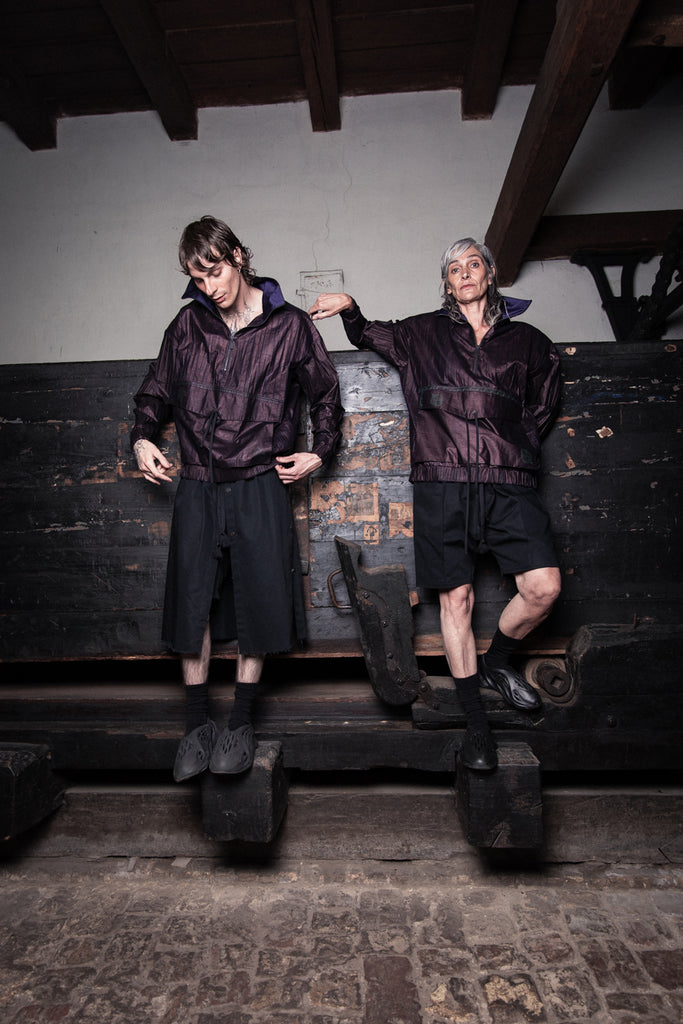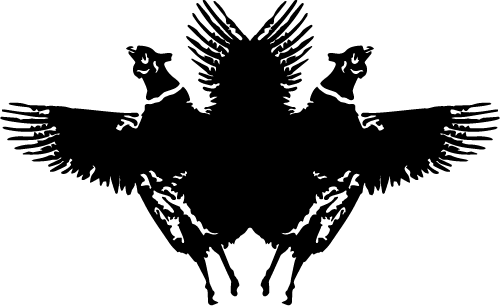
BLUE-DYEING
One of the oldest forms of applied arts, the reversed dyeing technique of block-printing is the embodiment of creativity and perseverance combined. Often kept within families for generations, the esteemed profession of blue-dyeing had a huge impact on Hungarian folkwear. Relative to the population, in the 1800s, Hungary had the highest number of blue-dyeing workshops in the entire Carpathian Basin. Declining in number over time, the 1900s marked the last generations of blue-dyers peaking in popularity in the ‘50s and ‘70s when the patterns were created by textile designers who worked closely with the craftsmen. However, the art of blue-dyeing all but disappeared soon after, during the rapid changes of Communist-era Hungary. This led to only a finite amount of the original textiles remaining, some of which are utilised in our pieces. Currently there are only a handful of workshops left in Hungary with the famous blue-dyeing family, the Kovács’s, still continuing the craft in Tiszakécske. One of the oldest and longest-running workshops was in Dunaföldvár, where ZSIGMOND pieces have been made since the first collection in 2014. The blue-dyed textiles used in our collections were purchased from the workshop in Dunaföldvár: these fabrics were mostly made in the 1970s before the workshop was shut down. Some of the textiles are used in their original form, as they were preserved after production, while some are upcycled from traditional garments. Some pieces retain the creases from its original form of the tightly pleated skirts worn in folk attire, echoing not only the fabric’s traditional origin but the garment design’s, too.
The blue-dyed fabrics were a fundamental material in folk costumes; in some places, it was worn for festive occasions, while in others, it was more for everyday use. They were present in folk costumes across the whole country but always in different ways both in terms of technique and patterns. The colours reflect the various dyeing techniques. They utilised indigo imported from India to create the dark blue colour, artificial dye for light blue and woad - also called dyer’s weed - plant that produces a green dye that oxidises as it dries. The different intensity of hues, as well as colour combinations in the pattern (such as blue, white, yellow and green) were achieved by submerging the textile in the dyes several times and applying the technique of double reverse dyeing - both meticulous methods that require great skill. The most unique colour - colloquially named "flame" after its duochrome-like effect - is extremely rare due to its costly and laborious production of submerging the fabric in the indigo countless times, then ironing it until the desired shine and slightly stiff finish was achieved.
The art of blue-dyeing is one that cannot be done half-heartedly: it requires both mental and physical endurance, great creativity and meticulous skills. This knowledge was traditionally passed within families, from one generation to the next. In its heyday, blue-dyeing was considered as the pinnacle of the creative industry: the craftsmen were highly respected for the value they created with their work. The high cost of the textiles was also widely understood among people in appreciation of the laborious process that required each fabric to be handled countless times. While machines were eventually purchased from Germany, the process could never be fully mechanised, which meant that the craftsmanship and the manual work required remained essential throughout the entire history of blue-dyeing. Their artistry was also at the heart of the uniqueness of each textile: the patterns were originally designed by the craftsmen themselves and then later in close collaboration with textile designers. The earliest printing blocks were made of wood; later, they were reinforced with copper wires and plates with a wooden base. They were entirely handmade and handed down through generations - each block could last for centuries. The intricate patterns themselves were a form of applied art, one where designs were revered and recognised for their unique quality but not protected by copyright.

























